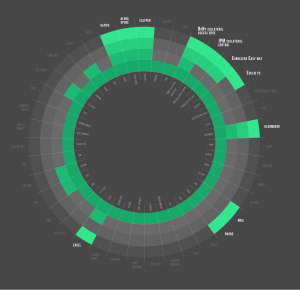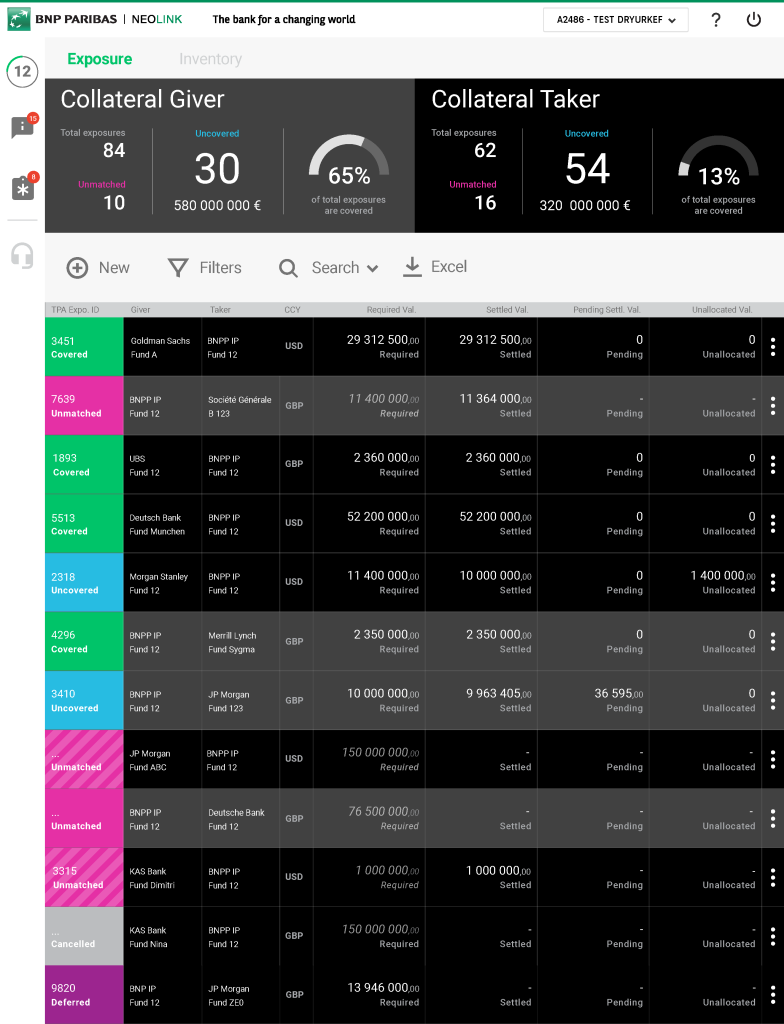Breaking into a new B2B market
Bridging the gap between product strategy and implementation for a collateral management software.
The Challenge
BNP Paribas is one of the world’s largest bank and financial service companies currently operating with a presence in 77 countries globally. This major European bank had a department which is specifically dedicated to the management of their clients’ securities, offering a wide range of financial solutions from custody to clearing. A few years ago, they decided to build a new collateral management solution to take advantage of a gap in the market.
Competition was fierce: JP Morgan and City Bank were the dominant players in an industry that moves billions of dollars every day. Breaking into this market required a good balance of business acumen (cost structure) and, above all, world-class user experience.
Size of the prize
The collateral management market was cornered by 3 major players, among which JP Morgan and Bank of America, which shared $1,000M+ in revenue each year. Given the lacklustre services they provided, BNP Paribas and Accenture joined forces in a venture destined to break into this market.
- BNP Paribas
- FinTech
- New Product Build
- 12 months
- $20M
- 10% market share in year 2
This product was going to be successful because of its superior user experience and cutting-edge matching algorithm.
Approach & Project
Because the user experience was one of the 2 key aspects to differentiate the product , I needed to know exactly how the back-end operators were performing their work and how the purchasing decisions were made. I had two questions: what problems this piece of software is going to solve? Who is going to make the buying decision – and how to convince them?
My team and I managed to gain access to a back-end facility for a few days, where my team and I could observe our future users in situation and interview decision makers about their expectations, processes and constraints.
 We completed this observation with a workshop, involving 12 key users to reflect on the issues of their current situation. This allowed me to draw a picture of the current application landscape and set our targets: what were the current tools most used for? How can we do much better than them? Are buyers going to be influenced? The resulting diagram on the left was to become our compass when we created the development roadmap and build user journeys.
We completed this observation with a workshop, involving 12 key users to reflect on the issues of their current situation. This allowed me to draw a picture of the current application landscape and set our targets: what were the current tools most used for? How can we do much better than them? Are buyers going to be influenced? The resulting diagram on the left was to become our compass when we created the development roadmap and build user journeys.
Once the user and market research were completed, and main use cases identified, I decided to proceed to prototyping fast. Wireframes were made at a record pace to explore what was possible, what was valuable but also to identify what we did not know yet. This “exploration through prototyping” allowed us to move fast, with rapid, weekly iterations, until we reached a prototype that embodied the strongest value proposition.
We then needed to land on a development roadmap. I used this prototype to illustrate this value proposition to our stakeholders, while other members of the team focused on building a business case with one goal in mind: how fast can we deliver the features that will differentiate the product? The resulting roadmap landed after a few weeks of workshops and iterations, quickly becoming the beacon that would drive the 70 developers involved, on and off-shore.
Offshoring development, a challenge
We quickly discovered that our front-end development team needed too much support for us to be happy with the quality or speed of delivery. I decided to re-integrate the development within my team, leveraging the budget surplus we gathered after we move so fast during the prototyping phase. Again, this bet paid off, as we ran into less quality issues, the code base was cleaner and we were also ready ahead of schedule.
Release
The product was released in 2019 and quickly grew a significant user base. It allowed BNP Paribas to accomplish their major objectives:
- Break into a very profitable market, in spite of the presence of well-established players.
- Create a new profit centre for the back-office division, usually tight on costs.
Success defined: product launched under budget, gaining 10% market share in year 2.
Where you make it – or you break it: Home Page
We went through dozens of iterations to land on this screen. It aggregates everything the back-office operators needs: an aggregate of her positions and risk exposure, a semi-detailed list of her individual trades, with a possibility to expand on each to display more data. This is an example of how I see a consistent and robust information architecture as necessary to build sharp, useful and delightful products.
